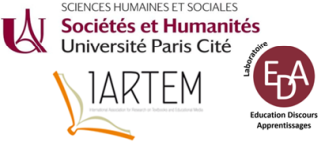The increasing presence of computers in Norwegian classrooms has contributed to a situation where the teaching and learning material landscape is larger, more complex and less coherent than before (Gilje et al., 2016). Today's comprehensive teaching and learning material systems include core components like printed or digital books supplemented by additional digital resources. Such systems are didactic teaching resources with adapted content and didactical design supporting the teacher's work.
In addition, students and teachers use resources from the Internet that may be relevant for learning, but which are not originally intended for school use. Such “hybrid practices” where the learning material mix consists of didacticized resources and recontextualized resources (both content and technologies) place new demands on the teacher's competence for integrating and adapting the diverse resources (Rasmussen & Lund, 2015). Vareberg (2018) argues that even learning resources especially made for learning material systems sometimes are fragmented and lack coherence putting a demand on the teacher to integrate and adapt the resources.
In the paper, I will present an ongoing text-oriented study of the textual coherence of the learning resources in each of the four most-selling L1 textbook / learning material systems for lower secondary school in Norway (Fabel, Kontekst, Norsk, Synopsis). The research questions I seek to answer, are: How are the systems of texts structured, and how are materially distinct components tied together to form thematic text complexes? Which “producer roles” are generated by the learning material systems, and how does their interplay contribute to the coherence in the systems?
The first corpus group is the chapters and resources about inter-Scandinavian language understanding and literature – a traditional topic covering both language and literature. The second group is the textbook chapters and supplemental resources about film – a comparatively new topic in Norwegian L1, including multimedia and multimodal approaches. Few teachers have specific expertise in these subject areas – so one can assume that most teachers are likely to rely on resources in the learning material system for their planning and teaching of these subjects.
Theoretically the paper draws on the text linguistic concepts like cohesion and coherence (Beaugrande & Dressler, 1981; Halliday & Hasan, 1976) as well as Eco's semiotically oriented reception theory (Eco, 1979) with an emphasis on the concepts model author – model reader. Through qualitative text analysis I seek to investigate how both singular texts and thematic complexes of diverse resources are bound together by textual ties. Furthermore, I investigate the interplay and collaboration – in a Bakhtinian sense – between different textualized producer roles/voices. The identification of different producer roles, is done by categorising content and propositions, identifying semiotic modality properties (like layout, colours, and fonts) and distinct communicative projects (like presenting subject matter vs. shaping students' learning activities by the means of questions, exercises, and assignments).
This study does not cover actual teaching practices, it departs from the assumption that the classroom practice of using ‘authentic' texts and information sources that are recontextualized and not intended as learning materials, places demands on the teacher to evaluate, adapt and recontextualize such resources in a teaching situation. In short: “hybrid teaching practices” require experienced teachers with better content matter knowledge than using teaching and learning resources designed and/or adapted for specific target groups, curricula, and specific learning situations. Investigating the coherence and the level of didactical adaptation of resources can contribute to identifying some of the demands the learning material elements places on the teacher.
References
- Beaugrande, Robert de, & Wolfgang U. Dressler. (1981). Introduction to text linguistics. London: Longman.
- Eco, U. (1979). The role of the reader: explorations in the semiotics of texts. Indiana University Press.
- Gilje, Ø., Ingulfsen, L., Dolonen, J. A., Furberg, A., Rasmussen, I., Kluge, A., Knain, E., Mørch, A., Naalsund, M., & Skarpaas, K. G. (2016). Med ARK&APP: Bruk av læremidler og ressurser for læring på tvers av arbeidsformer. Universitetet i Oslo.
- Halliday, M. A. K., & Hasan, R. (1976). Cohesion in English. Longman
- Rasmussen, I., & Lund, A. (2015). Læringsressurser og lærerrollen – et partnerskap i endring? Acta didactica Norge, 9(1). https://doi.org/10.5617/adno.2352
- Vareberg, O.C. (2018). Samarbeid og sekvensialitet : transmedial koherens i fem pedagogiske tekstsystemer for norskfaget på vg1. Universitetet i Oslo, Det humanistiske fakultet.

 PDF version
PDF version
